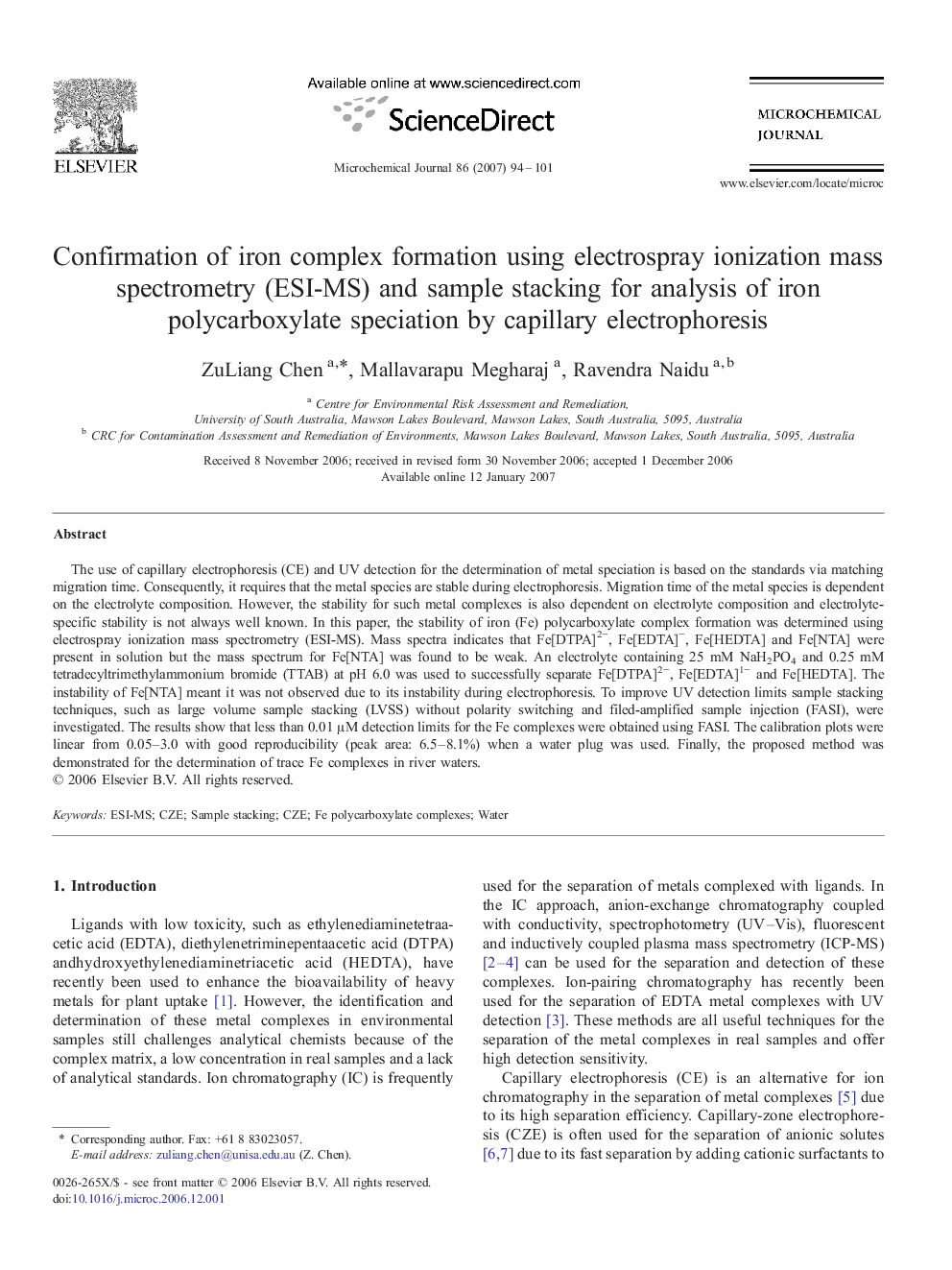| Article ID | Journal | Published Year | Pages | File Type |
|---|---|---|---|---|
| 1228393 | Microchemical Journal | 2007 | 8 Pages |
The use of capillary electrophoresis (CE) and UV detection for the determination of metal speciation is based on the standards via matching migration time. Consequently, it requires that the metal species are stable during electrophoresis. Migration time of the metal species is dependent on the electrolyte composition. However, the stability for such metal complexes is also dependent on electrolyte composition and electrolyte-specific stability is not always well known. In this paper, the stability of iron (Fe) polycarboxylate complex formation was determined using electrospray ionization mass spectrometry (ESI-MS). Mass spectra indicates that Fe[DTPA]2−, Fe[EDTA]−, Fe[HEDTA] and Fe[NTA] were present in solution but the mass spectrum for Fe[NTA] was found to be weak. An electrolyte containing 25 mM NaH2PO4 and 0.25 mM tetradecyltrimethylammonium bromide (TTAB) at pH 6.0 was used to successfully separate Fe[DTPA]2−, Fe[EDTA]1− and Fe[HEDTA]. The instability of Fe[NTA] meant it was not observed due to its instability during electrophoresis. To improve UV detection limits sample stacking techniques, such as large volume sample stacking (LVSS) without polarity switching and filed-amplified sample injection (FASI), were investigated. The results show that less than 0.01 μM detection limits for the Fe complexes were obtained using FASI. The calibration plots were linear from 0.05–3.0 with good reproducibility (peak area: 6.5–8.1%) when a water plug was used. Finally, the proposed method was demonstrated for the determination of trace Fe complexes in river waters.
